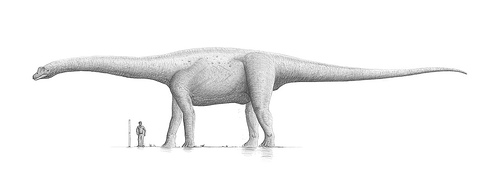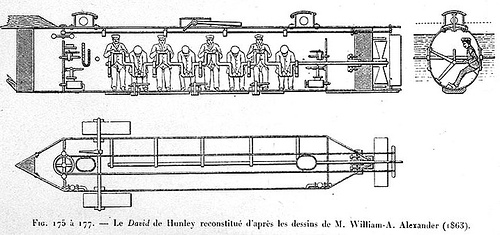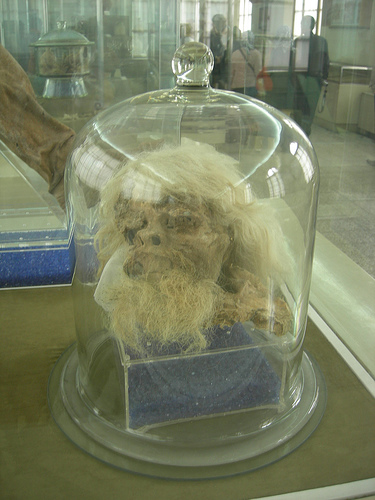You’re in a rowboat in a swimming pool, and you’re holding a cannonball. If you throw the ball into the pool, will the water level rise or fall?
Author: Greg Ross
King Size

In 1989, paleontologists discovered the fragmentary remains of an enormous dinosaur in southern India.
If estimates are accurate, Bruhathkayosaurus was 145 feet long and weighed 240 tons.
The largest modern whale is 110 feet long and weighs 195 tons.
Simple Enough
The following bill was sent to a gentleman:
aosafada: 1.50
atacinonimomagin: .50
Pade, Josef Jaxn: 2.00The items of that bill are not apothecaries’ articles, as might be supposed; but merely, ‘A horse half a day and a taking of him home again.’
— George Wakeman, “Tormenting the Alphabet,” Galaxy, 1866
Too Much Talent
John Cazale is not a household name, but he should be. When the actor died at age 42, he’d made only five films, but every one of them was nominated for best picture:
- The Godfather
- The Conversation
- The Godfather Part II
- Dog Day Afternoon
- The Deer Hunter
That alone would have made him unique in Hollywood history, but he added a hat trick. In 1990, 12 years after his death, Francis Ford Coppola used archive footage to include Cazale in The Godfather Part III (as Fredo Corleone).
That too was nominated for best picture.
Name Your Poison

In this position, composed by Harold Holgate Cross, White has 29 legal moves. What do they all have in common?
In a Word
agrexophrenia
n. inability to perform sexually due to fear of being overheard
Math Notes
32 + 42 = 52
212 + 222 + 232 + 242 = 252 + 262 + 272
Spared to Serve

The Confederate navy had a working submarine during the Civil War. Powered by a hand crank, the 40-foot H.L. Hunley managed to sink an 1,800-ton sloop-of-war in Charleston harbor in 1864, a historic first, but then herself sank.
Little is known about the sub’s crew, but one story held that the commander, Lt. George E. Dixon, had survived the Battle of Shiloh because a Union bullet struck a coin in his pocket. His sweetheart, it was said, had given him the coin “for protection.” This was considered a family legend until 2002, when a forensic anthropologist investigating the Hunley‘s remains discovered a healed injury to Dixon’s hip bone.
Near Dixon’s station another researcher found a misshapen $20 gold piece, minted in 1860, with this inscription:
Shiloh
April 6 1862
My life Preserver
G. E. D.
“Curious Signs in New York”

One may see in the shop-windows of a Fourth avenue confectioner, ‘Pies Open All Night.’ An undertaker in the same thoroughfare advertises, ‘Everything Requisite for a First-class Funeral.’ A Bowery placard reads, ‘Home-made Dining Rooms, Family Oysters.’ A West Broadway restaurateur sells ‘Home-made Pies, Pastry and Oysters.’ A Third avenue ‘dive’ offers for sale ‘Coffee and Cakes off the Griddle,’ and an East Broadway caterer retails ‘Fresh Salt Oysters’ and ‘Larger Beer.’ A Fulton street tobacconist calls himself a ‘Speculator in Smoke,’ and a purveyor of summer drinks has invented a new draught, which he calls by the colicky name of ‘Aeolian Spray.’ A Sixth avenue barber hangs out a sign reading ‘Boots Polished Inside,’ and on Varick street, near Carmine, there are ‘Lessons Given on the Piano, with use for Practice.’ ‘Cloth Cutt and Bastd’ is the cabalistic legend on the front of a millinery shop on Spring street; on another street the following catches the eye: ‘Washin Ironin and Goin Out by the Day Done Here.’
— Frank H. Stauffer, The Queer, the Quaint and the Quizzical, 1882
The Salt Man

In winter 1993 workers in a salt mine in western Iran uncovered the body of a man with long hair and a beard. He had been buried in the middle of a 45-meter tunnel.
Carbon dating showed he had been lying there for 1700 years. It appears he was of high rank and had been struck in the head, but no one knows who he was or how he came to be there.
See also Bog Bodies.
